Back in December I was presented with an opportunity to attend a January conference in San Diego and I was really torn. I knew I would have lots of deadlines this month and, while I very much enjoy the traveling, meeting new people, and seeing old friends that goes along with conferences, it’s become a bigger part of my work life and sometimes it’s nice to just stay home! But then I thought, “San Diego isn’t that far from the Salton Sea and ‘Borah’ (a curlew that breeds in the Pahsimeroi Valley of east-central Idaho) has been there for almost 2 months – if he stays and I could go look for him, that’d be worthwhile” and my decision was made. I could attend the conference – very worthwhile, by the way (the M. J. Murdock Charitable Trust’s Partners in Science program) – and then take advantage of the long weekend afterwards to go on a bit of a road trip. Of course, maybe I could fit in a little birding too :-).

their transmitters during summer 2013.
Before leaving Boise last week I called the Sonny Bono Salton Sea National Wildlife Refuge and reached a very friendly Mark Stewart, an education specialist, who told me how many curlews he’d seen lately (A LOT!) and gave me contact information for the biologists. Fortunately for me, Katie Montgomery was willing to spend part of her day off on Sunday afternoon touring me around the refuge and nearby agricultural habitats.
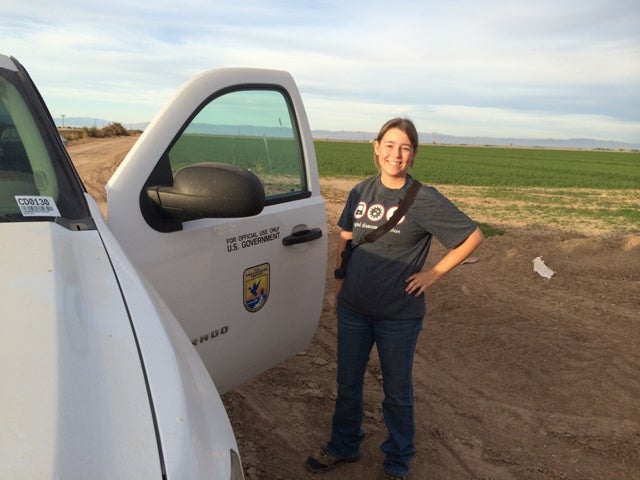
I didn’t drive directly from San Diego to the Salton Sea, however. I noticed on eBird that 2 of the many Blue-footed Boobies that ventured north and inland last fall were still lingering at a place I’d never been called Lake Skinner County Park, roughly between San Diego and Riverside. So, I got up too early on Sunday and drove to the park and it was well worth it – the boobies were easy to find so I spent a little time exploring the park and found LOADS of birds (maybe the long-running drought is concentrating even more birds at this oasis?), including some wintering migrants like Lark & White-crowned Sparrows and Townsend’s, Orange-crowned, and Yellow-rumped Warblers. I was most excited to see a few species I rarely get a chance to, such as California Gnatcatcher, Red-breasted Sapsucker, Nuttall’s Woodpecker, and Oak Titmouse. I literally had to force myself to leave but I had some miles to cover across some beautiful southern California foothills to get to the Salton Sea.
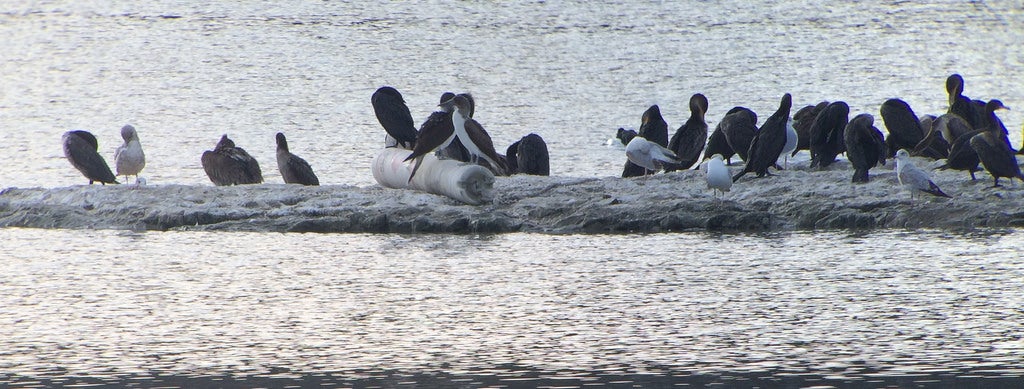
I arrived at our meeting spot (the Circle K in Westmorland) a little early so I used my phone to check the latest transmission locations from Borah’s satellite transmitter – a bay with mudflats on the refuge and a couple locations from nearby farm fields. We started by heading out to the refuge and I was amazed at the bird numbers – a cloud of Snow & Ross’s Geese, many raptors, sparrows fleeing from the road edges, and then tremendous waterbird numbers once we arrived at ‘the sea’.
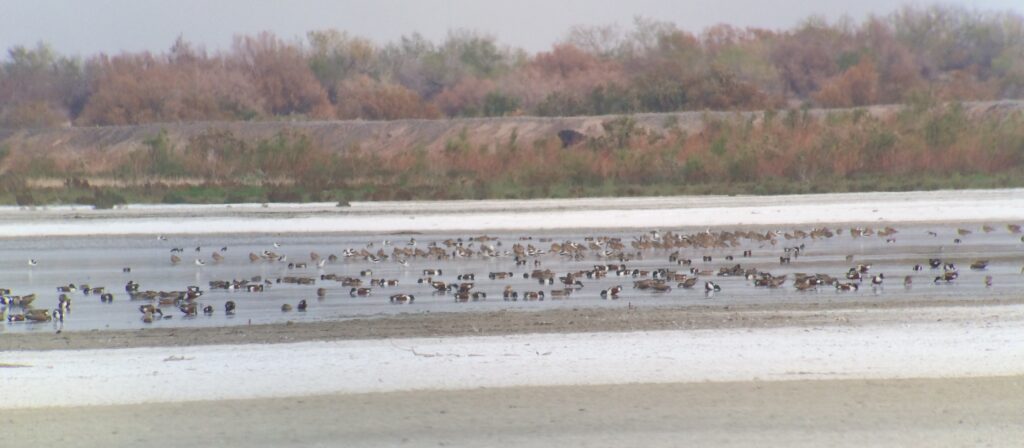
The birds were very distant and many of the curlews (I estimated about 180 in view) were either behind ducks or roosting with their bill tucked and one leg pulled up into their belly feathers. Thus, it would have been hard to see Borah’s color band or the antenna from his transmitter but I still gave it a shot! Katie, probably thinking ‘this guy is crazy if he thinks he’s going to see a color band from this distance’, was very patient with me and we enjoyed the birding in general, including a Sora that called once from the nearby marsh. Once I’d had my fill, we moved on to a few farm fields where recent transmissions had come from. A couple places with taller crops were likely areas where the bird had been flying over but we finally found a recently-irrigated field with loads of ibis and gulls and Katie said, “this is the type of situation I usually see curlews in when they’re in agriculture”.
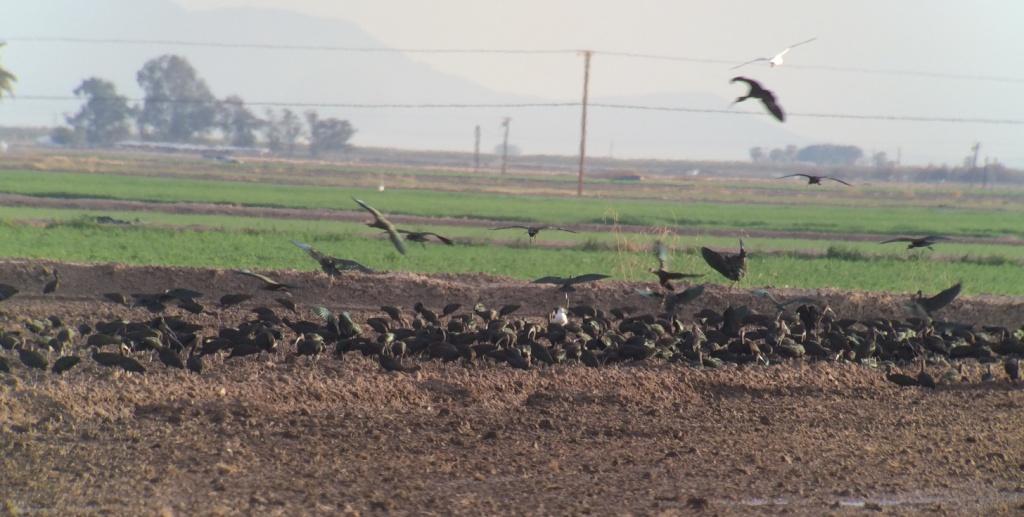
We couldn’t see any curlews at first but we figured it was worth bringing out our scopes since Borah had been here just hours before … While first scanning through the ibis horde, I briefly thought I saw something brown but then it vanished and I wondered if I just really wanted to see a curlew so badly after coming this far! But, I scanned further left and found some curlews (about 18) – and there were also about 10 Black-bellied Plovers here (we’d seen over 100 of these back at ‘the sea’).
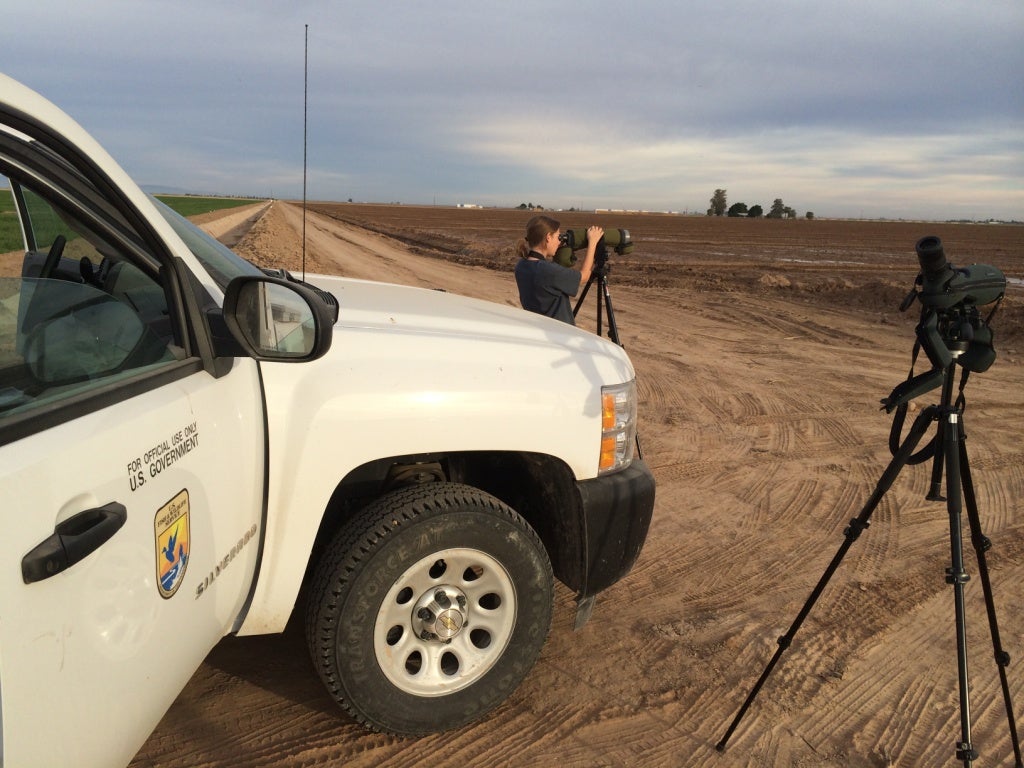
Katie Montgomery of the Sonny Bono Salton Sea NWR plying the agricultural horizons for curlews.
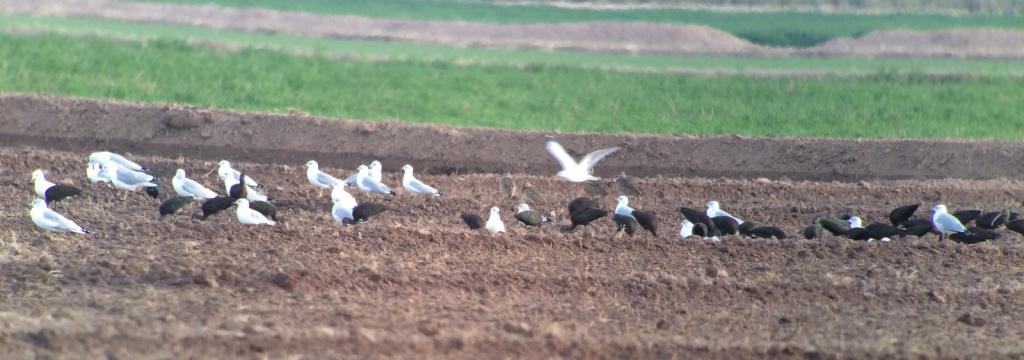
I tried in vain to find Borah but to no avail. I have to imagine he’d either been in view but hard to distinguish, flying over, or at least within a mile of us during our search. I knew it was a longshot to actually find one curlew among all these birds and at day’s end I was happy to have seen a few of the places where this curlew, whom I’d first seen and captured in late May near the historic settlement of Goldburg, Idaho, had been in the days and hours before our search. And, after studying White-faced Ibis for the first time in the summer of 2012, I really enjoyed getting to see similar concentrations using flood-irrigated agriculture on the wintering grounds as well.

Thanks to Borah for willingly carrying the lightweight burden of the satellite transmitter, teaching us about the rest of your life outside of Idaho, and for inspiring a fun road trip! Likewise, thanks to Katie Montgomery for giving up her off-day to show me some of the places that Borah has called home recently. Here’s to hoping I’ll see Borah back in the Pahsimeroi this May!